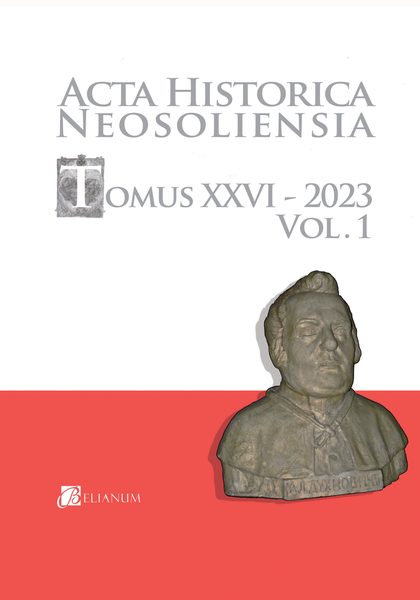The Roma sorceress in 18th century Hungarian sources
PÉTER TÓTH
Institute of History, Faculty of Humanities and Social Sciences, University of Miskolc, Miskolc, Hungary
Abstract: 18th century sources confirm the observations of cultural anthropology that Roma women played an important role in the sustenance of their families. In a gatherer lifestyle, their primary task was to get food. However, the social environment strongly restricted gathering therefore they had to apply different techniques. From among these, the most important one was the activity relying on beliefs which formed the image of the ’Roma witch’ for the surrounding society. It is important to note, however, that these beliefs were always those of the surrounding society and not those of the Romas themselves as otherwise, they would not have worked (similarly to the way Roma musicians played the music of the surrounding society and not that of their own community). In accordance with this, witchcraft (fortune-telling, binding or loosing love ties, the ability to see treasures, etc.) was also a service provided almost exclusively by women. And as the surrounding society (or at least, a part of it) had a demand for this service, it also became possible for its providers to get into areas closed for them, where they could continue the ’gathering’ following from their lifestyle.
Keywords: Roma women, beliefs, witchcraft, gatherer lifestyle.
Archív
Úplné textové verzie vo formáte PDF
- Acta historica Neosoliensia - Tomus 26, num. 1
- Acta historica Neosoliensia - Tomus 25, num. 2
- Acta historica Neosoliensia - Tomus 25, num. 1
- Acta historica Neosoliensia - Tomus 24, num. 2
- Acta historica Neosoliensia - Tomus 24, num. 1
- Acta historica Neosoliensia - Tomus 23, num. 2
- Acta historica Neosoliensia - Tomus 23, num. 1
- Acta historica Neosoliensia - Tomus 22, num. 2
- Acta historica Neosoliensia - Tomus 22, num. 1
- Acta historica Neosoliensia - Tomus 21, num. 2
- Acta historica Neosoliensia - Tomus 21, num. 1
- Acta historica Neosoliensia - Tomus 20, num. 2
- Acta historica Neosoliensia - Tomus 20, num. 1
- Acta historica Neosoliensia - Tomus 19, num. 2
- Acta historica Neosoliensia - Tomus 19, num. 1
- Acta historica Neosoliensia - Tomus 18
- Acta historica Neosoliensia - Tomus 17
- Acta historica Neosoliensia - Tomus 16
- Acta historica Neosoliensia - Tomus 15
- Acta historica Neosoliensia - Tomus 14
- Acta historica Neosoliensia - Tomus 13
- Acta historica Neosoliensia - Tomus 12
- Acta historica Neosoliensia - Tomus 11
- Acta historica Neosoliensia - Tomus 10
- Acta historica Neosoliensia - Tomus 09
- Acta historica Neosoliensia - Tomus 08
- Acta historica Neosoliensia - Tomus 07
- Acta historica Neosoliensia - Tomus 06
- Acta historica Neosoliensia - Tomus 05
- Acta historica Neosoliensia - Tomus 04
- Acta historica Neosoliensia - Tomus 03
- Acta historica Neosoliensia - Tomus 02
- Acta historica Neosoliensia - Tomus 01

